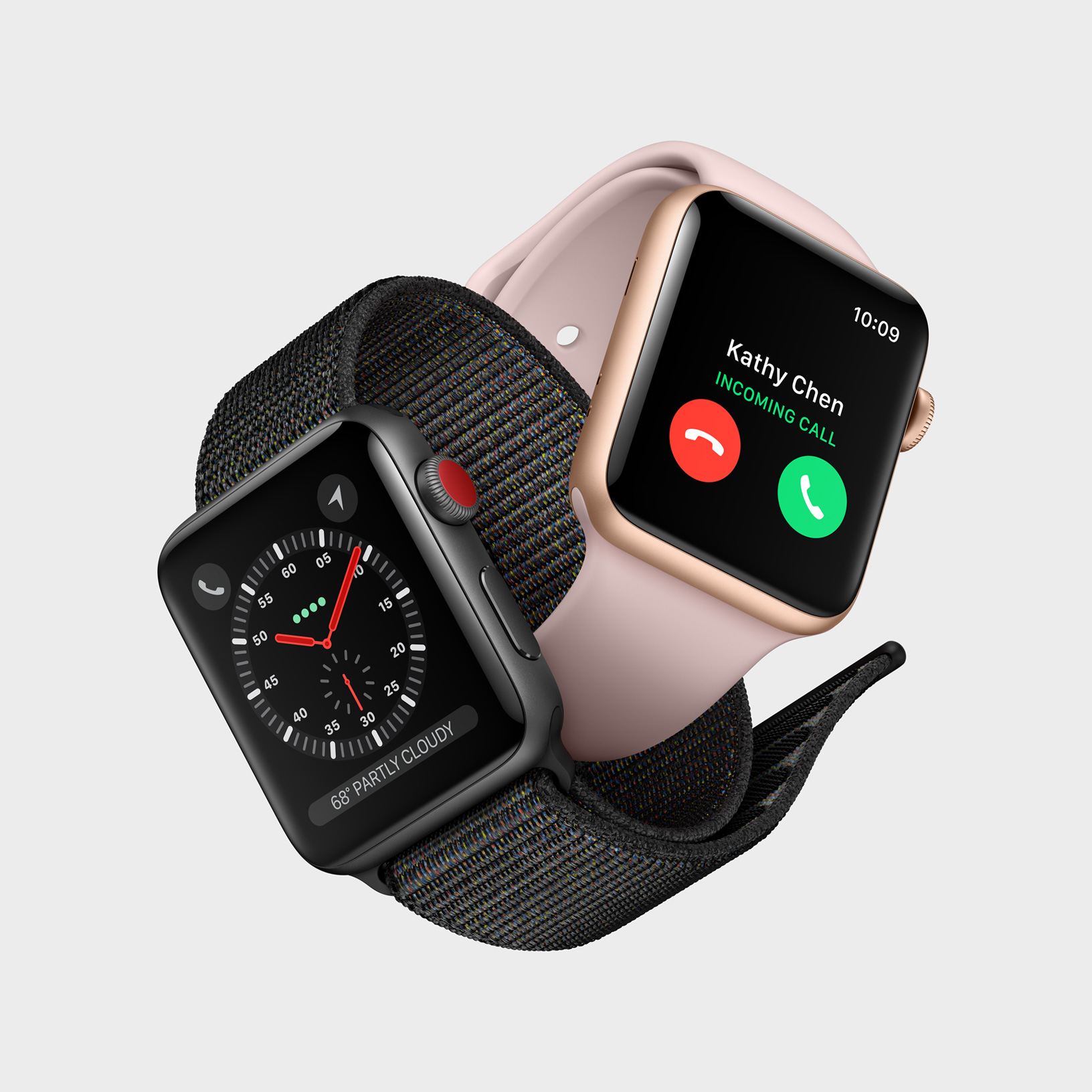The next generation of Apple Watch (Series 4) expected to launch in the fourth quarter of 2018 or in early 2019, may have solid state buttons that do not actually click, but instead use Apple's Taptic Engine to give haptic feedback to users, according to a report by Fast Company.
Image via Apple
This redesign would be the first aesthetic change to the Apple Watch since 2015. The Digital Crown and button on the side of the device would still exist, and the crown would continue to physically rotate through content, but the buttons would vibrate in response to the haptic effect of the Taptic Engine and not require physical touch to work. This change is similar to the change in the iPhone that went from using a home button to a solid-state design in 2016 with the launch of the iPhone 7. A solid state design makes the Apple Watch increases longevity by being more durable and also makes the Apple Watch more water resistant by removing the need for a physical button because the buttons no longer need enlarged chassis cutouts to handle constant motion. This in turn, frees up space for a larger battery.
Image via Apple
A Closer Look at the Taptic Engine
In its first Apple Watch, Apple introduced its new Taptic Engine, a linear actuator that could transform advanced control signals into different feedback models. The actuator has magnetic drivers that can start and stop movement of a large internal weight precisely, thus responding to a large range of vibrations from light taps to long, extended vibrations. These haptic sensations are thus monitored and measured. The Taptic Engine can replicated taps, vibrations and a human. heart beat. This original technology was added to the iPhone to replace the physical home button and then also added into the trackpads of MacBooks.
Heart Rhythms and EKG Functions
Image via Apple
Apple has also been developing the sensors in the tops of the buttons to gather health data such as heart rhythms. Currently, the heart rate sensor on the back of the watch is able to do this through direct contact with the skin, but other measurements require additional contact and this could be achieved using the solid-state design.
Apple is also expected to integrate capacitive sensing technology into the new button system in a bid to increase health monitoring capabilities. A second point of contact to the user's skin would help collect electrical signals flowing through a user's body.
The Apple Watch is expected to have EKG monitoring capabilities, according to a report last year from Bloomberg. This would help in detecting arrhythmia and stroke risks. The Apple Watch has already helped users detect heart problems and diseases, thus seeking treatment.
This new technology may function similar to the AliveCor's Kardia Band EKG accessory that has two sensors - one inside the band contacting the wrist of the Apple Watch user, and an external one that interacts with the user's finger from the other free hand (not wearing the watch). An EKG reading is possible by sending a current between the sensors and across the user's chest.
Image via Apple
Apple Watch Helps Users Detect Heart Problems and Diseases
This summer, using an Apple Watch helped a young Australian man discover a hole in his heart. 24-year-old Adam Love discovered that his heart was beating too fast (130-140 minutes per minute) when he slept for about six hours pr night. This prompted him to seek medical attention. Doctors discovered he had literally a hole in his heart. The young man was able to get heart surgery and leave the hospital soon after. He told the local 9 News station in Australia about his experience.
“I don’t think I’d live without one now. I love it for the convenience but also the fact it just picked up something medically that I had no idea about and it potentially saved my life.”
Earlier this year, a teenager in Florida, Deanne Recktenwald, discovered that her resting heart rate was dangerously high at 190 beats per minute. The Apple Watch gave her an alert to seek medical attention, which she did at the local Tampa hospital where she discovered she had chronic kidney disease. The medical team there was surprised at how accurate the Apple Watch reading was. The teenager's mom, Stacey, spoke with ABC local news.
“It was alarming that the watch was telling us to seek medical attention. I didn’t even know that it had the capability of giving us that alert.”
Long-Term View - No Buttons At All
It is also rumored that Apple's industrial design group is moving towards the elimination of buttons altogether long-term where the Apple Watch would instead respond to touches by the finger on specific parts of the Apple Watch body - areas that would be linked to capacitive touch sensing modules and tie to an onscreen interface. This would help eliminate physical features from the device, similar to the removal of the headphone jack in the iPhone 7 and the home button in the iPhone X.



